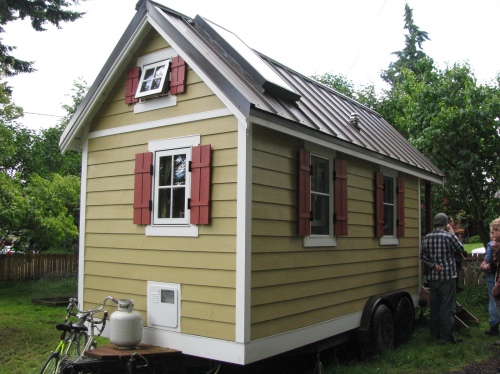
DAVID ADAMS looks at the move towards smaller – and smaller – homes…

PICTURE: Tomas Quinones (licensed under CC BY-SA 2.0).
Gaining momentum over the past couple of decades has been the tiny or small house movement, a push toward more sustainable living – in both an environmental sense but also a financial sense – by reducing the footprint of the family home (and living more simply to boot). A push-back against the expansive consumerism which has seen so-called ‘McMansions’ fill the suburbs, the tiny house movement (or countermovement if seen as a response to larger houses), is said to have emerged in the US in the late 1990s with English-born US architect Susan Susanka, whose “Not So Big” mantra is to “build better, not bigger”, generally cited as being one of the key figures. Tiny or small houses come in various shapes – everything from small homes built on wheels to adapted shipping containers – and sizes but according to US website, The Tiny Life, the typical tiny house there is between 100 and 400 square feet (about 9.2 to 37 square metres). There are some issues to negotiate if wanting to build your own tiny house – among them, financing (banks may be reluctant to lend because they may not see the resale potential of a tiny house as equal to a larger house) and zoning laws (among other things they may mandate that buildings be required to be a certain size). Groups like the American Tiny House Association and Tiny Houses Australia may be able to help. On the pro side, tiny houses have been posited as the solution to a range of issues – everything from supplying cheap housing for the homeless and dealing with issues of overcrowding or a lack of space for building new homes through to countering the rising problem of housing (un)affordability. While experts believe they are unlikely to be more than a niche market in the short term (in the longer term, issues of the availability of resources may become a factor pushing people towards them), it is fair to say that a growing number of people are now looking at them as a realistic alternative which enables them to have their own (small) roof over their head.





